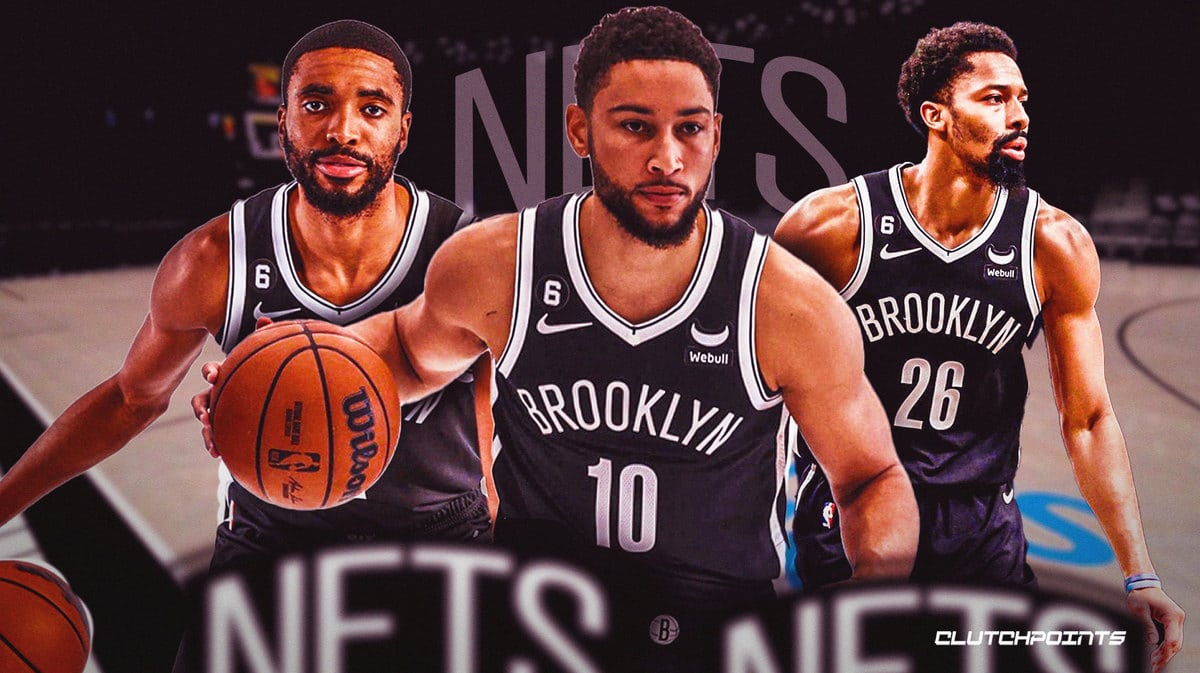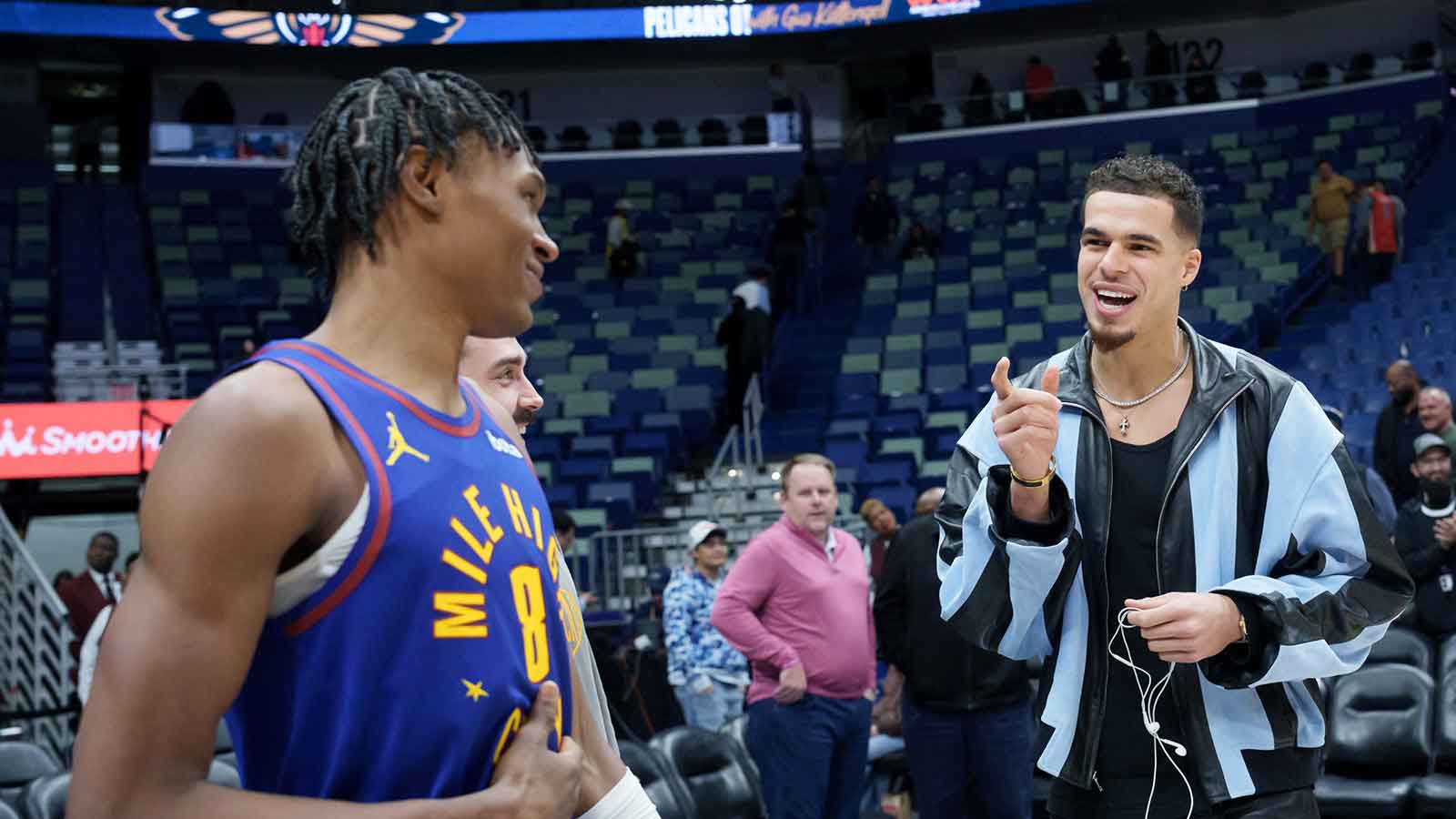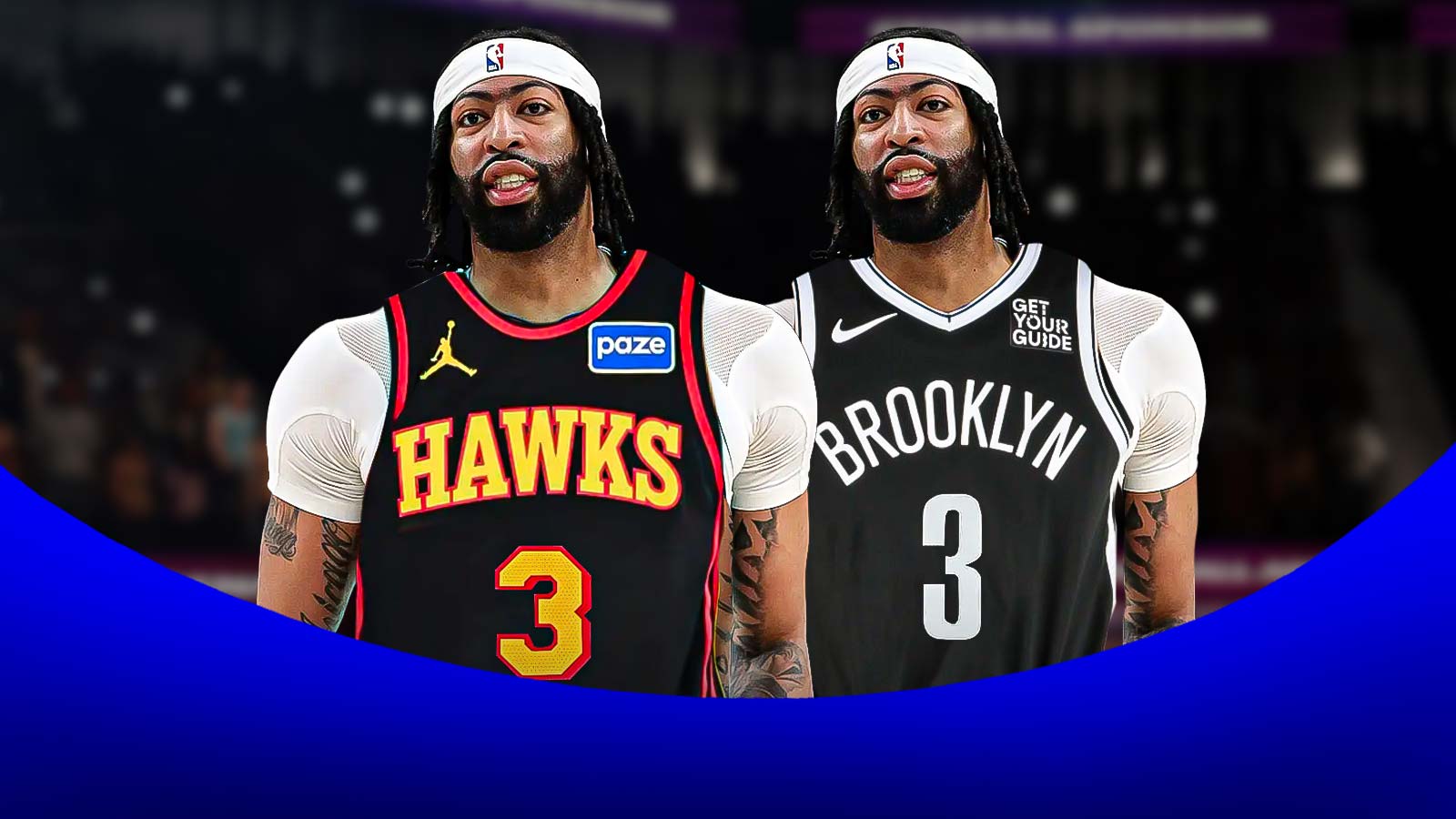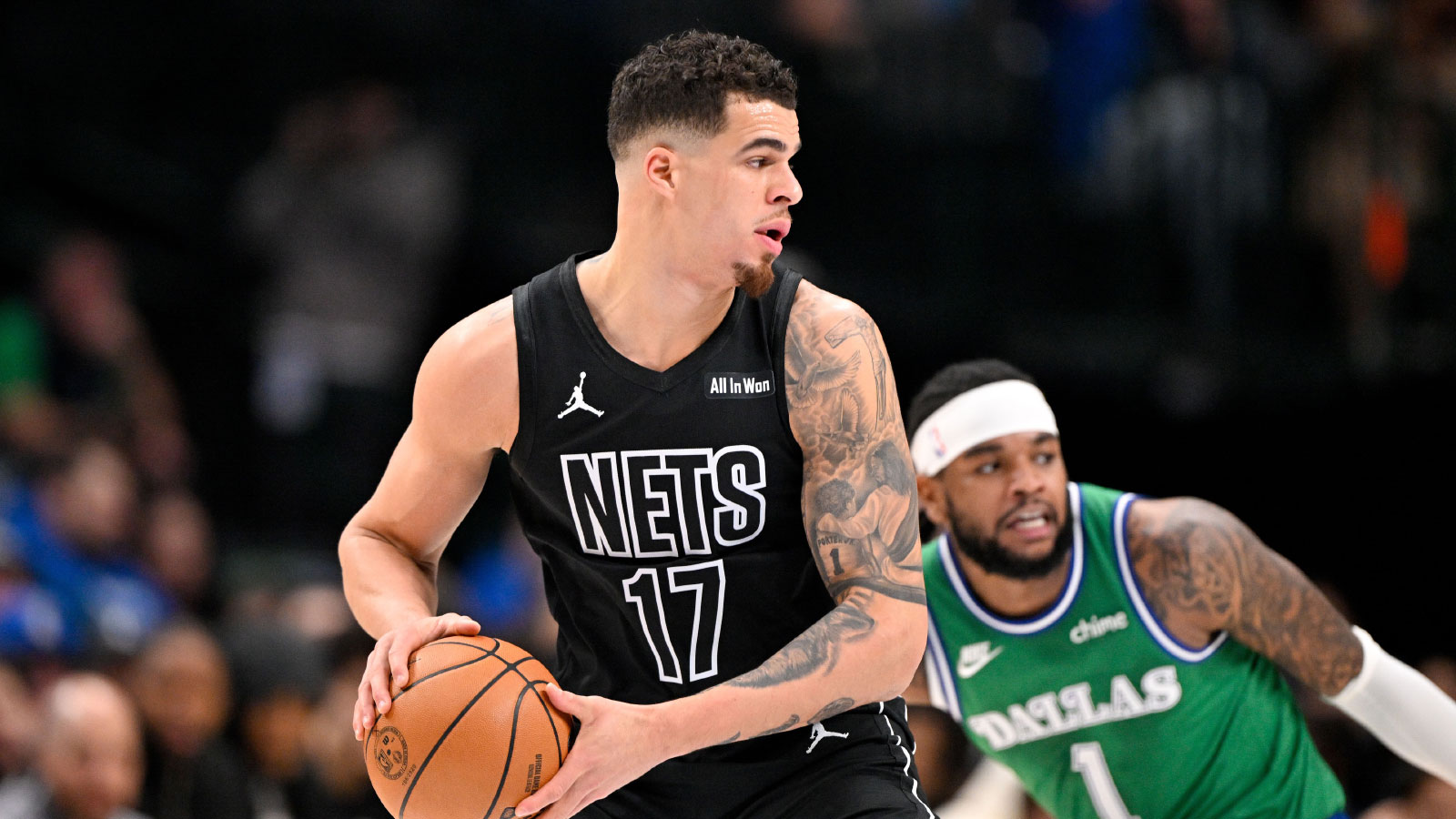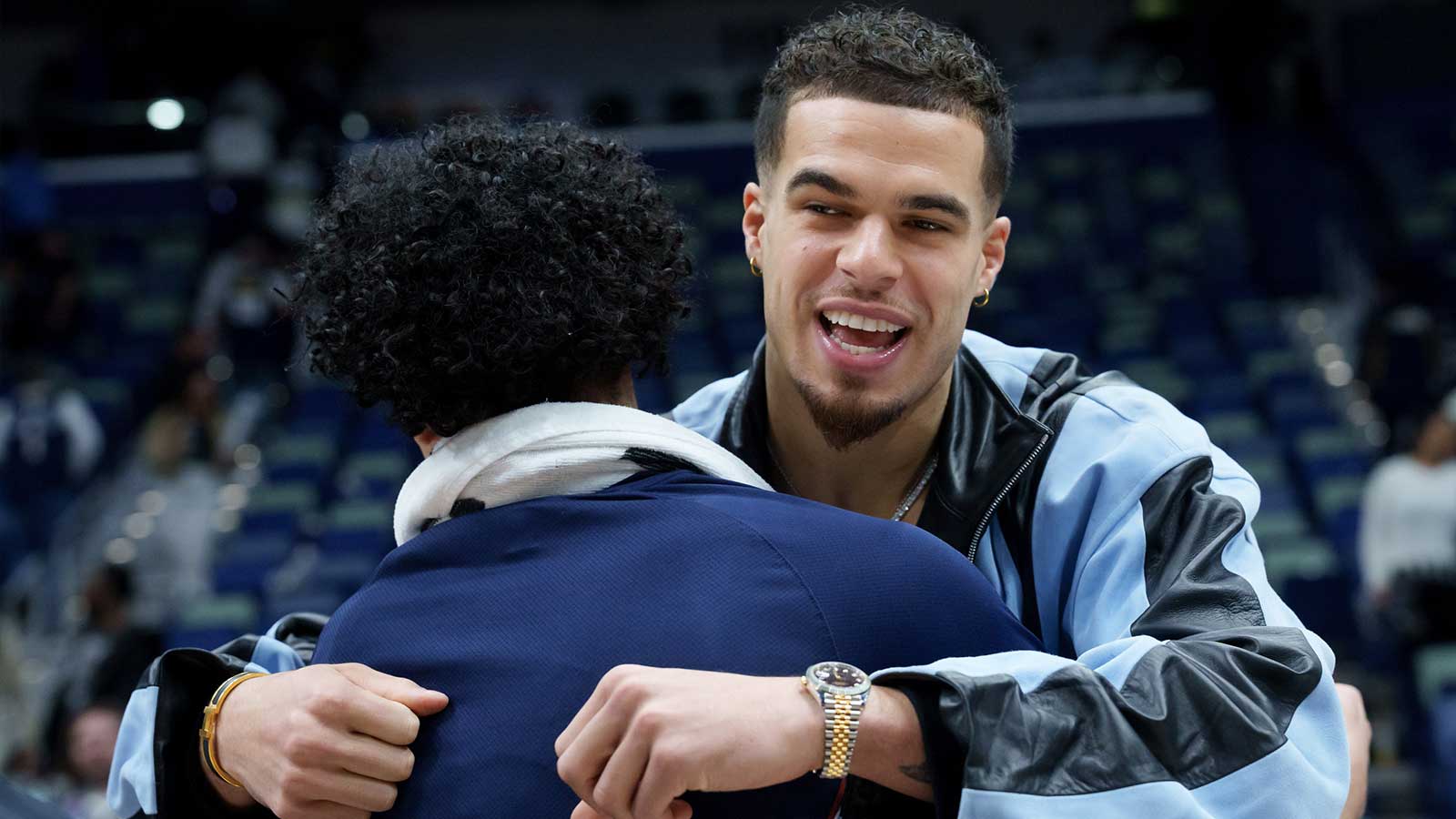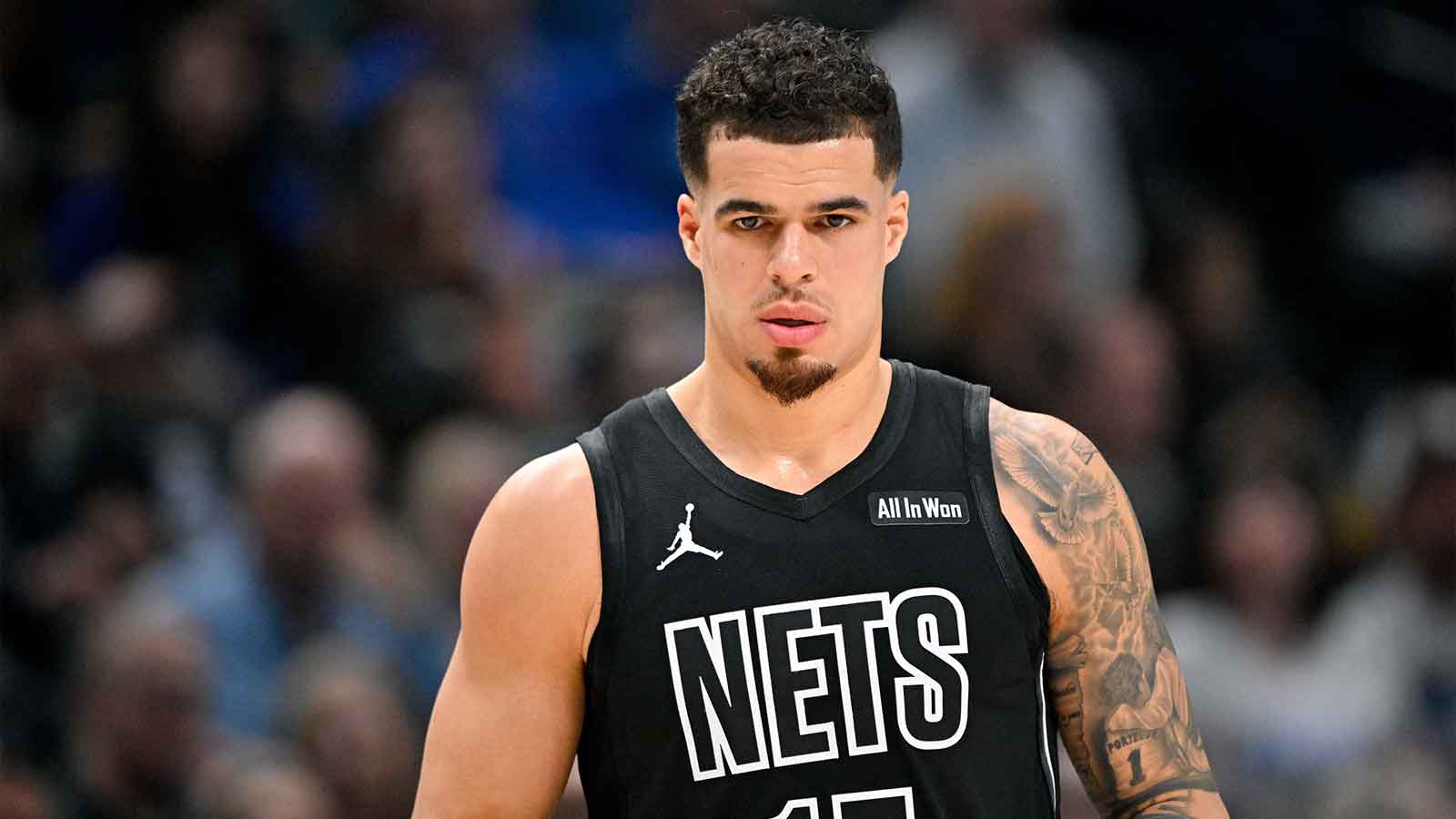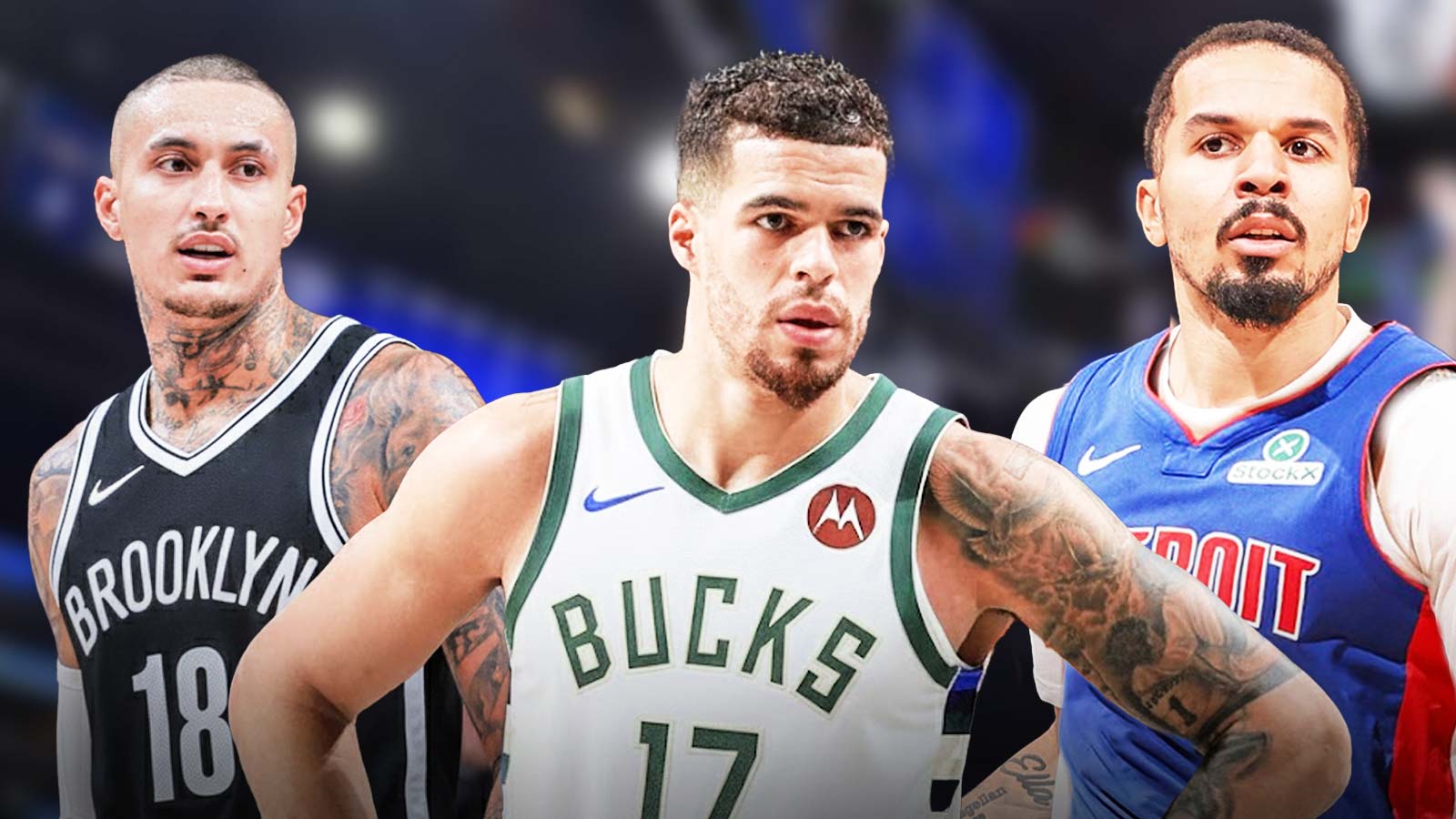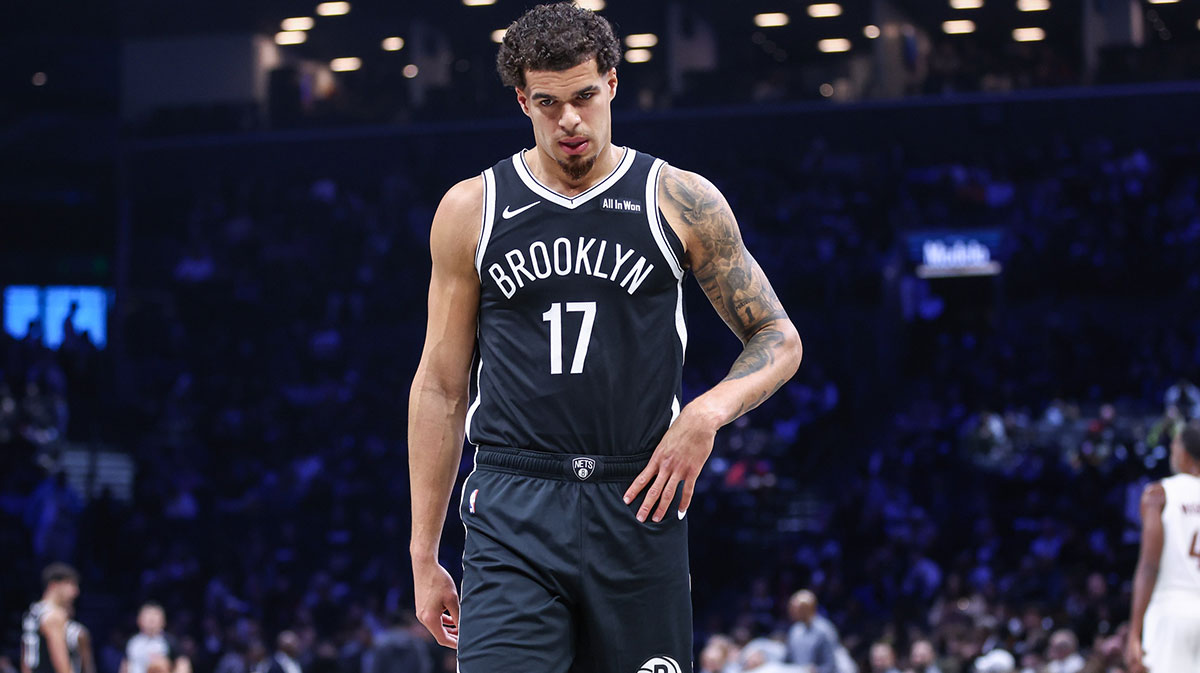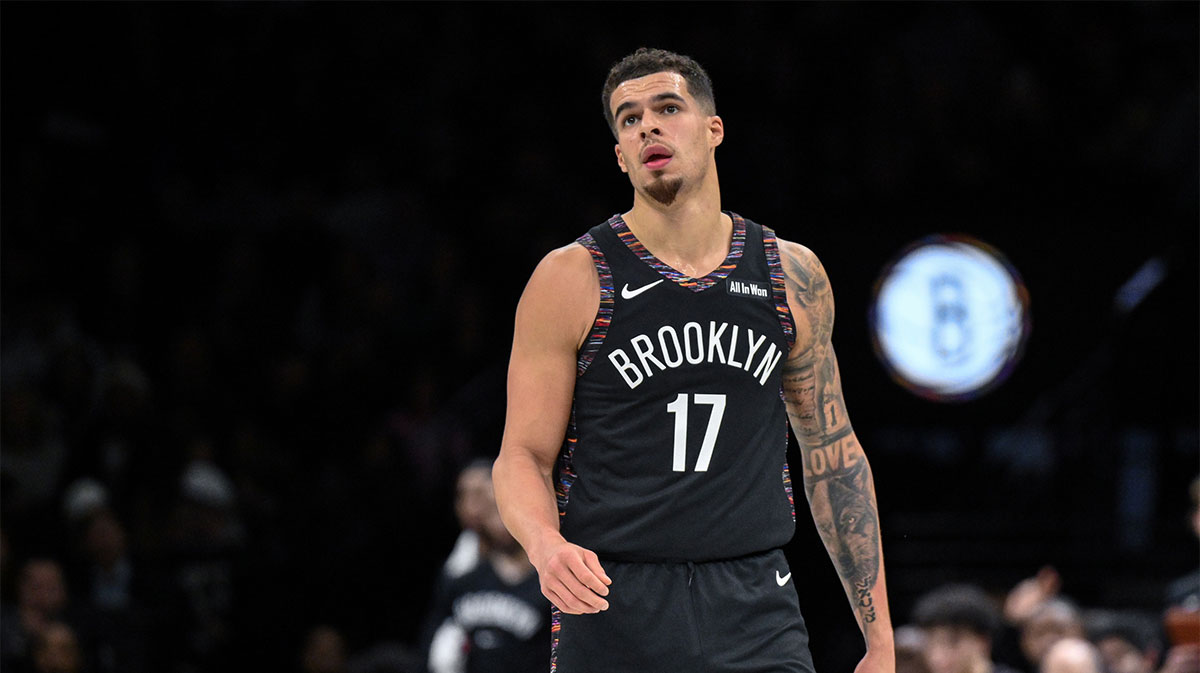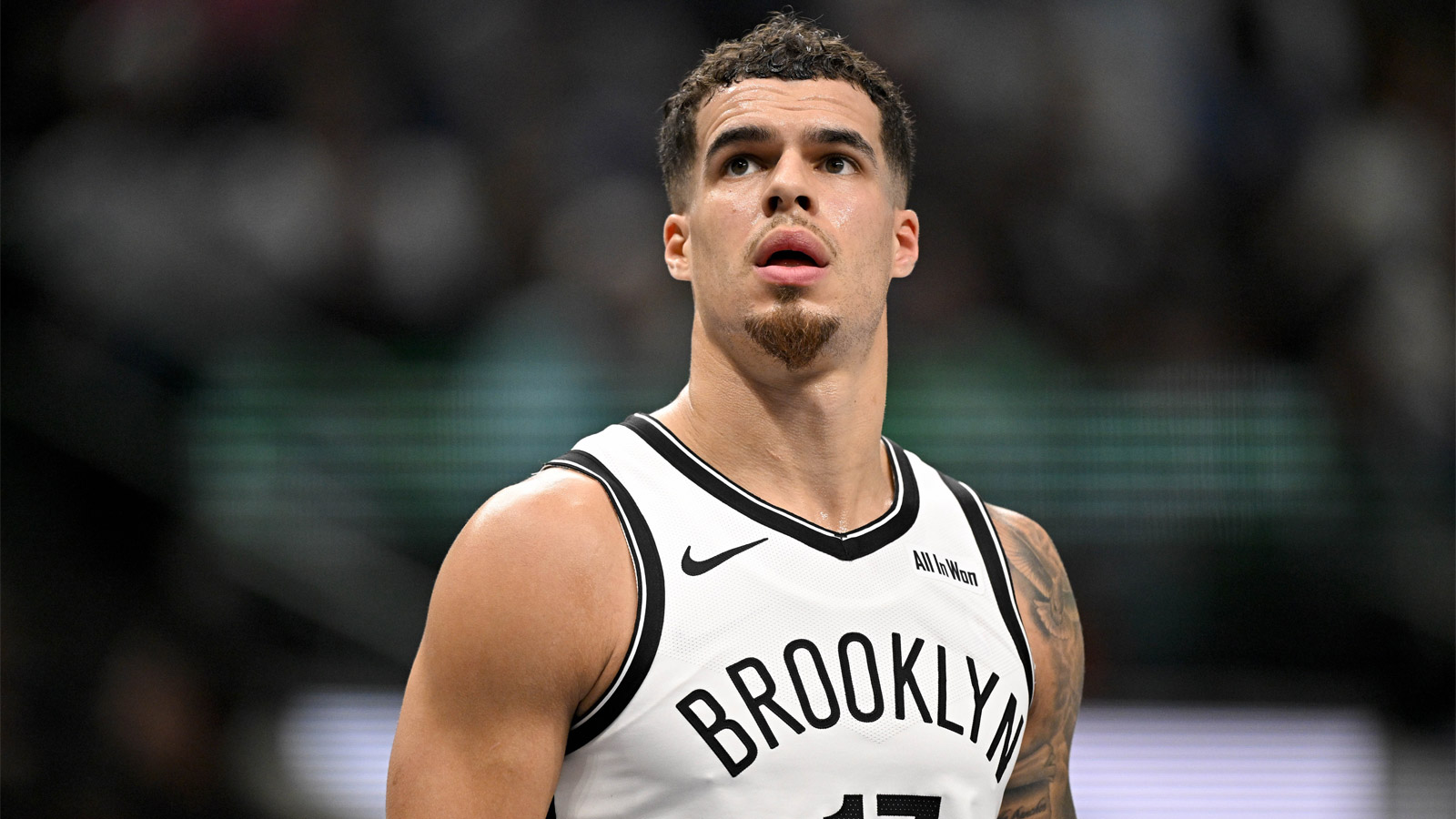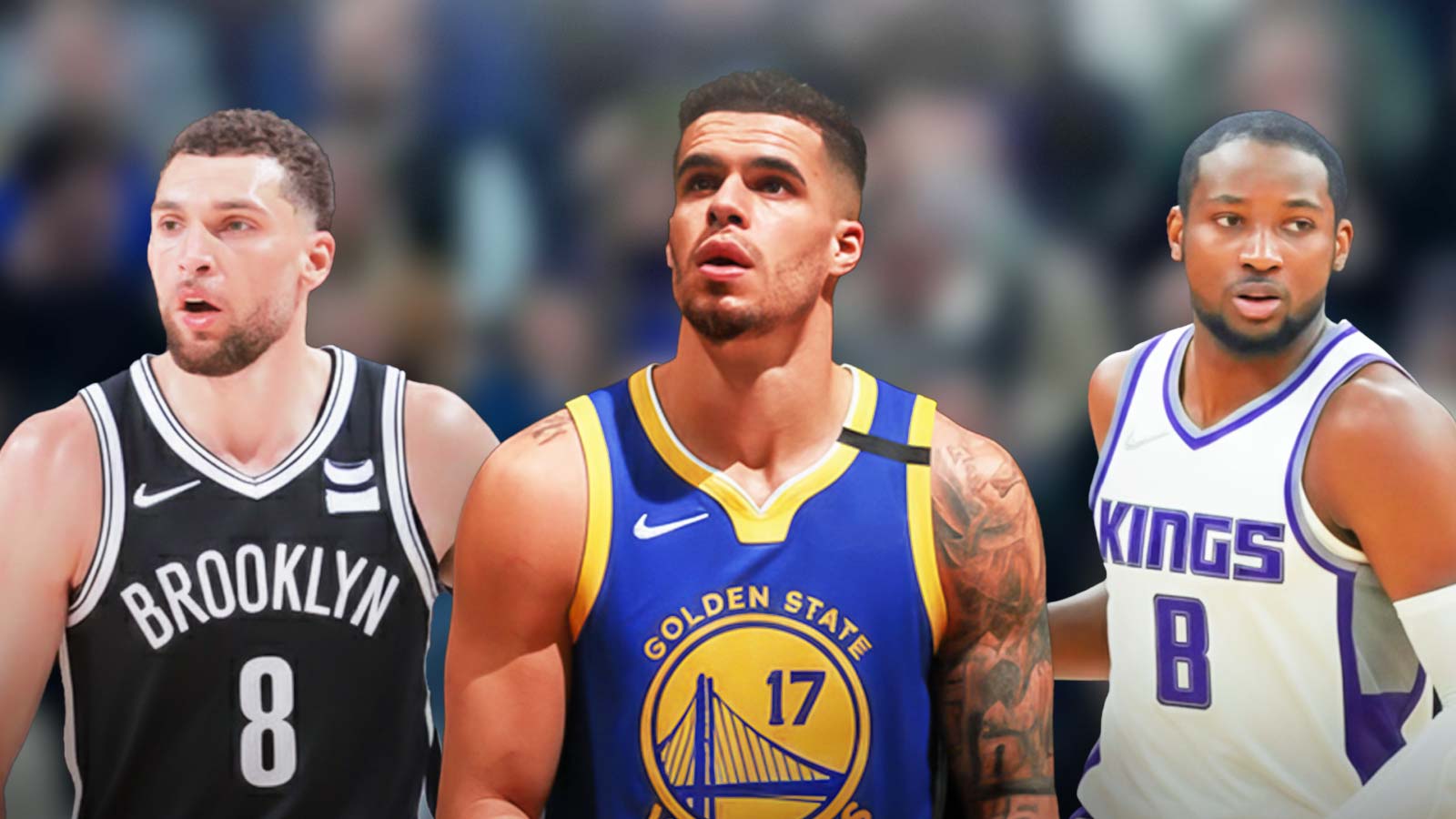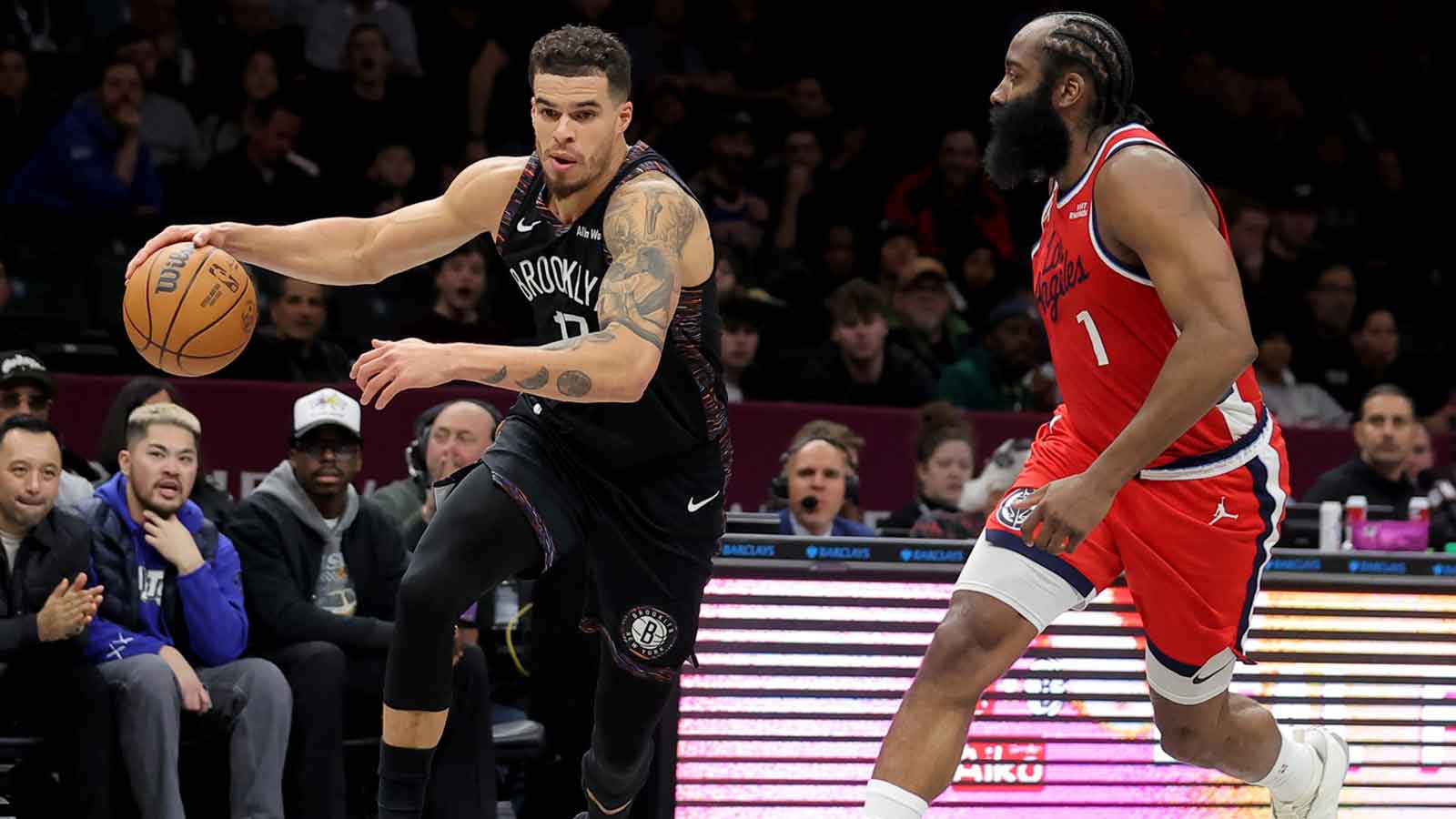The Brooklyn Nets open training camp next week as they turn the page to the first full season of the post-Kevin Durant, Kyrie Irving era. The bulk of Brooklyn's roster will be comprised of returning contributors from the second half of 2022-23.
With that, we breakdown the number one area each returning Net must improve if Brooklyn hopes to make the playoffs for the sixth straight season:
Ben Simmons: Confidence
After missing the entire 2021-22 season due to a back injury and mental health issues, many felt Simmons could be the Nets' missing piece alongside Kevin Durant and Kyrie Irving entering 2022-23. Those believers were quickly silenced as the former number-one pick looked reluctant and often unwilling to attack the basket or generate his own shot.
Simmons ranked eighth on the Nets in shots attempted (5.6 per game) during the first half of the season. That lack of aggressiveness was most glaring in fourth quarters, where he attempted just 0.7 shots per game for the year.
Injuries undoubtedly played a role in the three-time All-Star's lack of confidence offensively. Simmons was missing the explosiveness of his Philadelphia days, barely able to rise above the rim on drives, even when uncontested. After undergoing a microdiscectomy on a bulging disk last summer, Simmons missed three extended periods during the first half of the season due to knee, calf and back ailments. He was then forced out at the All-Star break and later shut down due to a nerve impingement in his back.
I thought this play wasn't talked about enough Monday. Simmons generates most contact we've seen and comes up grabbing his back.
He said this when I asked him about aggressiveness after the opener. Shouldn't be too surprising after surgery, but clearly lingering effects there. https://t.co/V0MT0adWkm pic.twitter.com/vXydcPQo63
— Erik Slater (@erikslater_) October 26, 2022
Simmons spoke confidently recently about his ability to take a step forward this season, calling his body “the strongest it's been” since joining the Nets. Brooklyn isn't expecting the Aussie to return to his Philadelphia form, but Simmons' willingness to attack the paint, keep defenses honest and become a reliable contributor will be one of the keys to the team's success.
Mikal Bridges: Playmaking
Bridges made his case to be considered one of the NBA's rising stars following his trade to Brooklyn. In 30 games with the Nets, the 27-year-old averaged 27.7 points on 47/38/89 shooting splits. Bridges scored 30 or more 12 times during that span after reaching the total just twice in four-and-a-half years with Phoenix.
Despite his breakout as a high-usage scorer, the former lottery pick averaged just 2.7 assists per game with Brooklyn. That inexperience as a distributor led to Spencer Dinwiddie, who ranked fifth in the league at 9.1 assists per game after joining the Nets, dominating the ball down the stretch of games. Bridges attempted just nine of Brooklyn's 60 clutch shots after joining Brooklyn compared to 22 for Dinwiddie, per NBA.com. The Nets ranked 28th in clutch offense (final five minutes within five points) during that span, shooting 40 percent while posting a 4-7 record in clutch games.
Bridges has shown the most offensive promise of any player on the Nets' roster. Brooklyn's coaching staff knows this and should give him expanded clutch opportunities this season. The Villanova product's ability to grow as a late-game decision-maker will be a barometer of Brooklyn's success.
Spencer Dinwiddie: Three-point shooting
Dinwiddie's three-point shooting was cause for concern at 28.9 percent over 26 games with Brooklyn last season. Some of those struggles can be attributed to growing pains within the Nets' new-look offense. Regardless, the 30-year-old will need to significantly improve this year if Brooklyn hopes to field a competent offense with Ben Simmons and Nic Claxton in the starting five.
There's reason for optimism that Dinwiddie's three-point shooting can improve in a heavier off-ball role alongside Simmons. The nine-year veteran's three-point numbers have historically been better off the catch than the dribble. Dinwiddie shot 40.4 percent from deep over 76 appearances alongside Luka Doncic in Dallas. The Nets version of Simmons is nowhere near Doncic as an offensive creator, but he's a good enough facilitator to find Dinwiddie a steady dose of open looks in the halfcourt and transition.
Cam Johnson: On-ball scoring
After three seasons playing a complementary role to Devin Booker and Chris Paul in Phoenix, Johnson saw expanded opportunities as an on-ball creator with Brooklyn. The 27-year-old proved efficient while attempting career-highs in shots from the mid-range and at the rim. Johnson's growing offensive repertoire was on full display during a 22-point first-half in Game 2 of the Nets' first-round series against the 76ers.
HAVE A HALF, CAM JOHNSON.
22 points (Playoff career-high)
4 threes
9/13 FG📺: TNT | Game 2 | PHI Leads 1-0#NBAPlayoffs presented by Google Pixel pic.twitter.com/e8smk0R9tm
— NBA (@NBA) April 18, 2023
With limited offensive firepower at their disposal, Johnson's development as a self-creator could make or break Brooklyn's season. The former lottery pick is one of three Nets with true three-level scoring ability, alongside Mikal Bridges and Cam Thomas. The front office showed its faith in Johnson's ability to make an offensive leap by rewarding him with a four-year, $94.5 million contract. Head coach Jacque Vaughn would be wise to prioritize the forward's on-ball development to take pressure off Bridges.
Nic Claxton: Free-throw shooting
Free-throw shooting remains a glaring deficiency for Claxton following a breakout 2022-23 campaign. After shooting 4-of-22 during the first round of the 2022 playoffs against Boston, Claxton shot just 47 percent from the charity stripe through January last season. To the 24-year-old's credit, he didn't let those struggles impact his aggressiveness, and after tweaking his form during the All-Star break, he closed the season shooting 65.3 percent.
1st clip is Nic Claxton’s free-throw stroke early this year. 2nd is the last few games.
Noticeable change with an extended pause at the top. I asked Jacque Vaughn about it.
JV said Clax has a personal free-throw coach on the staff who “tweaked” his form. He would not say who. pic.twitter.com/5aHrRlzj8t
— Erik Slater (@erikslater_) December 20, 2022
Building upon that second-half consistency will be essential for the Nets in 2023-24 as Claxton's offensive role continues to grow.
Royce O'Neale: Finishing
There weren't many negatives surrounding O'Neale's 2022-23 campaign. He had the best season of his career from three (38.9 percent) and even stepped up as a secondary ball handler and distributor (career-high 3.7 assists per game) in Kyrie Irving and Ben Simmons' absences. The 30-year-old was also one of Brooklyn's top clutch performers, shooting 10-of-20 from the field and 8-of-16 from three in crunch time (final five minutes of games within five points).
The number that sticks out as a negative for O'Neale was his 37.9 percent mark on twos. After shooting 60 percent or better at the rim over his last four seasons, the first-year Net struggled to find his touch in 2022-23. He converted on just 46 percent of his attempts, ranking in the fourth percentile among NBA wings, per Cleaning the Glass. O'Neale should see his volume decrease in that area this season with Bridges, Dinwiddie, Simmons and Johnson handling the ball. However, some added consistency as a finisher would provide a boost for a Nets team searching for offensive production.
Dorian Finney-Smith: Three-point consistency
Finney-Smith made an immediate impact defensively upon his acquisition last season. At 6-foot-7 with a 7-foot wingspan, the seven-year veteran thrived in Brooklyn's switch-heavy scheme as a perimeter and post defender while also providing rim protection. However, Finney-Smith's three-point shooting, the main feature of his offensive game, was unreliable.
After shooting 35.5 percent from three with Dallas before being traded, he struggled to find his rhythm in Brooklyn, converting at just a 30.6 percent clip. Some of those struggles may be attributed to a nagging injury to the pinky finger of his shooting hand, which he underwent surgery on in the offseason. Like Dinwiddie, the Nets will need Finney-Smith to space the floor at a high level if they hope to find success with Claxton and Simmons in the rotation.
Cam Thomas: Defense and playmaking
Despite a glaring need for scoring following the trades of Durant and Irving, Thomas could not crack the Nets' rotation late last year. While the 21-year-old became the youngest player in NBA history to score 40-plus points in three straight games, it was clear Brooklyn's coaching staff wanted to see him improve the less-polished aspects of his skillset: defense, playmaking and spot-up shooting.
After struggling during his lone season at LSU and as a rookie, Thomas improved dramatically as a three-point shooter in 2022-23, converting at a 38.3 percent clip while draining 41 percent of his catch-and-shoot attempts. However, he did not make the same strides as a playmaker or defender.
In 15 games playing 25 or more minutes, Thomas averaged just 2.6 assists. Over five games as the team's lead ball-handler (12/10 @IND – 2/4 vs. WSH – 2.6 vs. LAC – 2/7 vs. PHX – 4/9 vs. PHI), he averaged 42.6 points but just 2.4 assists. Head coach Jacque Vaughn hinted at the team's desire for Thomas to grow as a facilitator following the guard's 46-point performance in Brooklyn's regular-season finale:
I asked Jacque Vaughn what the biggest challenge of trying to harness Cam Thomas’ elite scoring at the NBA level has been:
“I wish the score was 134 Brooklyn Nets, 105 Philadelphia. I think that part helps. The goal is you win as a team. So 46 points is great but we end up… pic.twitter.com/hu9totHZOW
— Erik Slater (@erikslater_) April 9, 2023
As a former first-round pick with high-level offensive potential, Thomas should get every opportunity to earn a rotation spot for a team that doesn't project as a contender. Playing within an offensive role that gets his teammates involved and developing a sound understanding of defensive principles will be the main factors in his success or failure.
Day'Ron Sharpe: Pick-and-roll defense
Sharpe has significant room for improvement in several areas, as was evident in his inability to crack the rotation with Brooklyn searching for a backup to Nic Claxton last season. Offensively, the 21-year-old offers little to no self-creation, doesn't space the floor and often struggles to catch passes in traffic. And yet, Sharpe's pick-and-roll defense frequently stood out as the main deficiency of his game last season.
At 6-foot-9, 265 pounds, Sharpe moves far less gracefully than Claxton (6-foot-11, 215 pounds) in open space, making him a difficult fit in Brooklyn's' switch-heavy scheme. The Nets attempted to switch to a drop coverage sparingly with Sharpe in the middle but found little success. The former first-round pick can provide high-level rebounding for a team that finished 28th on the defensive glass last season. However, until Brooklyn finds a pick-and-roll coverage suitable for his skillset, it will be tough for Vaughn and his staff to play Sharpe extended minutes.

